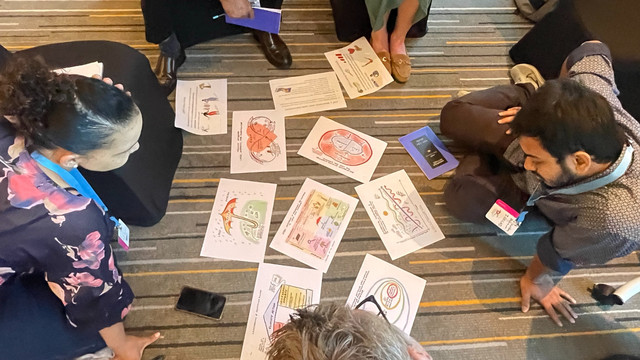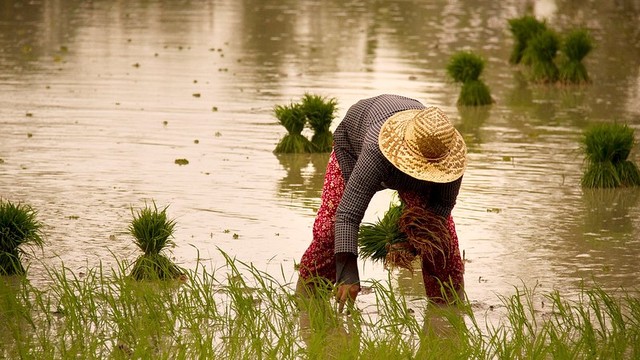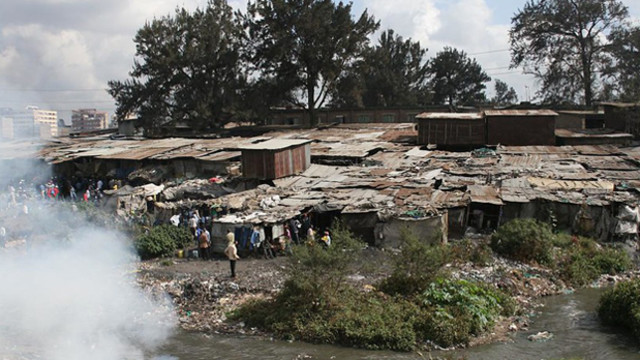May we suggest a cricket crostini? Mealworm chocolates?
An interactive session at this year's Development & Climate Days conference looked at the future of food by offering participants sustainable snacks — made with insects.

Macaroons topped with crickets and mealworm chocolates prepared for participants at the food session (Photo: Matt Wright/IIED)
The event was partly a panel discussion and partly a cooking demonstration. It was led by Pablo Suarez, associate director for research and innovation of the Red Cross Red/Crescent Climate Centre, and Economist journalist Oliver Morton. But the real star was top Senegalese chef Pierre Thiam, who prepared a range of insect snacks for participants.
The session on 6 December was part of the Development & Climate (D&C) Days conference, which is held each year alongside the UN climate talks. D&C Days offers an informal space for politicians and researchers to discuss key aspects of the fight against climate change.
The food panel had a serious message: finding ways to cut the climate costs of food production is an important strategy to reduce greenhouse gas emissions. The Consultative Group for International Agricultural Research (CIGIAR) estimates that emissions from the world's food systems make up some 29 per cent of global greenhouse gas emissions. Their Food Emissions webpage sets out the climate impacts of livestock and other crops.
Recipe for disaster?
In his presentation, Suarez outlined the climate impacts of producing beef, as opposed to raising insects for feed.
Raising one kilo of beef requires 15,000 litres of water and approximately 10kg of feed.
The high impact of beef includes the methane produced by the cattle, as well as the emissions involved in producing their feed and processing and transporting meat. Producing a kilo of beef creates 100 times more greenhouse gas emissions than producing a kilo of edible crickets, which requires just 1.7 litres of water and a kilo of feed.
Are insects the answer?
Substituting environmentally sustainable insects for high-impact foods such as beef could provide an opportunity to develop more sustainable consumption patterns.
The UN Food and Agriculture Organisation (FAO) has said that edible insects contain high quality protein, vitamins and amino acids. It has identified some 1,900 different types of edible insects.
Suarez said some two billion people around the world eat insects regularly, but many find the idea repellent. Suarez said that for many people eating insects might require "crossing a mental line".
Photo gallery: insects on the menu
A challenge: #tastethechange
The panellists launched a challenge for people to 'Taste the change' and start a trend for low-emissions food.
Suarez said the challenge was designed to broaden people's thinking about consumption. He said: "Think about what you need to do to put yourself out of your comfort zone and embrace more sustainable consumption."
Chef Thiam, who has just published a book on Senegalese food, highlighted another benefit. He said: "Use insects as you would meat or shrimp but without your conscience – as what you are doing is good for the planet."
Read more:
IIED researchers are working on a range of projects looking at food systems and sustainability:
- In Sub-Saharan Africa we are working with in-country partners to understand the trade-offs between food production and forests and the implications for land use policies
- In Indonesia are working with NGO HIVOS to look at how to support informal food vendors, who are often an important resource for poorer communities, and
- We have been working with Kenya's International Livestock Research Institute to support small-scale informal milk vendors.







